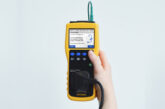
David Sweetman, Marketing & Business Development Director at Di-log Group, looks at why PAT testing can offer a valuable new string to your bow.
I regularly have conversations with electricians regarding adding extra value solutions to their business portfolio and the easiest way to do it. Implementing PAT into their inventory, in my opinion, is one of the most cost-effective ways to achieve this.
When firms who don’t undertake Portable Appliance Testing tell me that they’ve been asked if they can offer this type of work, or have referred the work to another firm (or even turned it down), I often wonder why. More often than not, the usual response I receive is “there’s no money in PAT testing”!
Admittedly, you’ll never get filthy rich by testing kettles, toasters and IT equipment all day long, but there are still some very successful examples of PAT testing companies out there.
So how can introducing PAT benefit and work for your business?
Many electricians I’ve spoken to over the years have the tendency to refer on PAT enquiries or dismiss them altogether, which is understandable as appliance testing can be a bit, let’s say, repetitive.
During such conversations I frequently advise that although the task can be long, whilst on-site you may well discover opportunities for additional business. Any one of these might offer you the chance to tender or quote for supplementary work, and can include things such as EICRs, fire alarm and emergency lighting testing, or even major energy efficiency projects. By turning down these initial enquiries, are you also missing out on valuable additional business?
What has the industry introduced to make PAT testing more cost-effective for the customer and the electrician?
The latest code of practice introduces a risk-based approach, which, depending on the site-type, location and product, helps determine the re-test period up to 48 months, as long as user checks and visual inspections are part of the PAT schedule.
There are many products on the market to help you integrate PAT into your business, and with Di-log’s ApplianceTEST range of manual PATs, we’ve created an easy and simple solution to seamlessly integrate PAT testing into your portfolio.
The Di-log DLPTx Series of ApplianceTEST PATs offers users the chance to pick a unit that suits their requirements, whether they’re after an affordable unit to dip their toe in the water or a more comprehensive choice of instrument.
The ApplianceTEST DLPT1, for example, will give you a simple, cost-effective unit that enables you to complete safety testing on general domestic appliances, power tools, extension leads and, with its low current continuity test, IT equipment. The instrument will perform all mandatory tests including Earth Continuity, 500V Insulation and Substitute Leakage Tests.
The ApplianceTEST DLPT2+ is designed to meet ALL the recommended testing requirements set out in the 4th Edition Code of Practice, giving you full scope to undertake the safety testing of all electrical appliances, even commercial.
The key difference with the DLPT2+ over the DLPT1 is the ability to data log up to 999 assets. The instrument will time and date stamp, allocate an asset number and record all test data to its internal memory, which can then be downloaded to Seaward’s PATGuard 3 asset management software (supplied free for 12 months with each unit).
In addition to the data logging facility, the DLPT2+ has the ability to test electrical appliances fitted with surge protection, with the added benefit of a 250V selectable insulation test.
Although not mandatory, the instrument offers a full range of leakage tests, recommended for testing appliances with motors or electronic switching.
The advanced features of the DLPT2+ will also enable you to test extension leads fitted with RCD plugs, without the worry of any fixed wire RCDs tripping. With the optional phase adaptors, the DLPT2+ has the feature to perform a leakage and load test on any 3-phase commercial appliance.
The DLPTx Series of PAT testers are fitted with Seaward’s Zap Technology which will inject a high current into the earth for a short duration. This will enable the tester to accurately measure and simultaneously check the integrity of the earth connection.
Time management benefits
All the DLPTx Series ApplianceTEST units can also be used with Di-log’s new ApplianceTEST mobile app. The app, available for Android and iOS, enables you to manually input the recorded data from all manual PATs.
As well as recording your data, the app has some great user features, such as imaging, which allows you to document evidence of appliance failures and evidence of repairs. The app also includes extension lead length resistance calculation.
Another great feature is an in-built site and location risk assessment tool, enabling you to enter your environment details to accurately determine the re-test periods as suggested in the current Code of Practice.
Once you’ve completed your testing, you’ll then be able to send the test certificates directly to your client via PDF or export the CSV directly into PATGuard, saving you valuable admin time and helping to prompt immediate payment.
The ApplianceTEST DLPT2+ also has the option to plug in a serial label printer and is fully compatible with Seaward’s Test’n’Tag Pro Serial printer, which can be ordered as an optional accessory and allows you to print ‘pass’ or ‘fail’ labels as you test.
All Di-log PAT Testers are designed and manufactured in the UK to the highest standards. They’re accurate, safe and rugged and can help you to find a better balance between cost and fitness for purpose.
For further information on the DLPTx Series of PAT testers from Di-log visit: www.dilog.co.uk, where we can arrange an on-site visit from an experienced Area Sales Manager.









